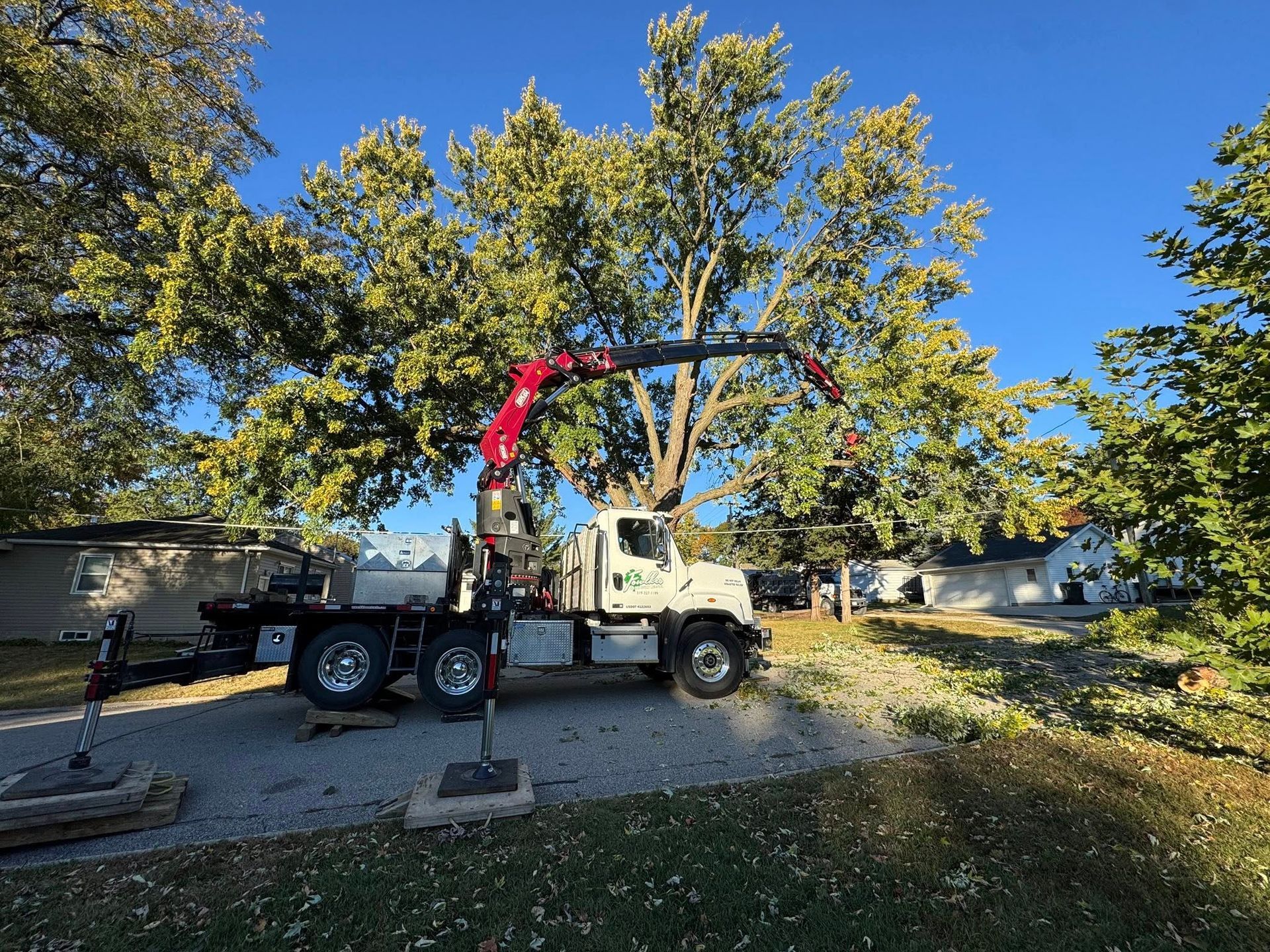How Regular Tree Pruning Promotes Healthy Growth and Prevents Disease

Table of Contents
- Why Regular Tree Pruning Matters More Than You Think
- Strengthening Your Trees for Longevity
- Fighting Tree Disease Before It Starts
- Practical Tree Maintenance Tips We Recommend
- The Right Time to Call in Professionals
- Conclusion and How We Can Help
Key Takeaways
- Regular tree pruning encourages stronger growth and reduces hazardous branches.
- Catching issues early prevents tree disease and costly damage.
- Simple but consistent tree maintenance keeps your yard safe and visually appealing.
- Working with a professional ensures long-term tree health and peace of mind.
Why Regular Tree Pruning Matters More Than You Think
When we first visit a home, we often notice trees that look beautiful from a distance—but a closer look tells a different story. Branches crowding each other, limbs touching power lines, and trees with dead wood or fungal spots. Many homeowners think, “It’s just a tree—it’ll handle itself.” The truth is, ignoring your trees can create serious safety hazards and lead to long-term health problems. That’s why regular tree pruning is so important—it’s not just cosmetic; it’s essential for long-term tree health.
By selectively removing damaged, overcrowded, or dead branches, we help trees focus energy where it matters most: healthy, strong growth. Over the years, we’ve seen how a single pruning session can transform a struggling tree. One homeowner had a large maple in their backyard with branches leaning dangerously toward the deck. After professional tree pruning, not only was the tree safer, but the leaves now grew fuller and stronger.
Pruning isn’t just about avoiding hazards—it’s about giving your trees the tools they need to resist disease, recover from storms, and flourish aesthetically.
Strengthening Your Trees for Longevity
Trees, like people, grow stronger when they’re supported properly. When branches grow unchecked, they can become weak or brittle, especially where multiple limbs compete for sunlight. That’s why early and regular tree maintenance is so important.
Building a Strong Branch Structure
Think of a young tree like a skeleton. Proper pruning shapes that skeleton for the future. We guide branches to grow at healthy angles, reducing the chance of splitting in storms or under snow weight. Over the years, this careful shaping prevents emergencies like falling limbs or catastrophic breaks that can damage homes or injure loved ones.
We often work with clients who inherited mature trees with poor branch structure. By gradually pruning over a few seasons, the trees adapt to the changes, growing sturdier and more balanced. It’s not an overnight fix—it’s an investment in long-term resilience.
Removing Dead or Damaged Limbs
Deadwood is more than an eyesore. It’s a haven for pests and a breeding ground for pathogens. By removing dead or weak branches, we not only improve your tree’s appearance but also protect it from tree disease.
I remember a customer who ignored a split oak limb for months. By the time they called us, a small fungal infection had begun spreading. Early pruning could have prevented it entirely. That’s why we always emphasize catching problems while they’re manageable.
Improving Airflow and Sunlight
Ever notice some parts of your yard are damp and shaded, while others thrive in sunlight? The same principle applies to your tree canopy. Crowded branches block sunlight and trap moisture, creating ideal conditions for fungal infections.
By carefully thinning the canopy, we open pathways for light and air, helping leaves dry faster after rain and reducing the risk of tree disease. Over time, this also allows more sunlight to reach your lawn, improving grass health and giving your yard a more vibrant appearance.
Fighting Tree Disease Before It Starts
One of the most overlooked benefits of regular tree pruning is disease prevention. Trees are living organisms, and just like us, they can get sick if neglected.
Spotting the Early Signs
When we walk a property, we look closely for subtle symptoms: discolored or spotted leaves, cracks in the trunk, fungal growth, or unusual bark texture. These are the first signs of tree disease, and catching them early is key.
For instance, a homeowner in Cedar Falls noticed small brown spots on their ash tree. They were worried it was minor, but upon inspection, we found the beginning stages of ash dieback. Targeted pruning removed the infected sections, giving the tree a strong chance to recover without spreading the disease to neighboring trees.
How Pruning Helps
Removing infected or crowded branches reduces the chance for pathogens to spread. But technique matters. Cutting too aggressively or at the wrong angle can open the tree to new infections. That’s why professional arborists follow precise methods to encourage healing and maintain natural defenses.
We’ve learned that trees thrive when we respect their natural growth patterns. Every cut is deliberate, and every branch removed has a purpose.
Practical Tree Maintenance Tips We Recommend
Maintaining tree health doesn’t have to be complicated, but consistency is crucial. Here’s what we advise for everyday tree maintenance:
- Seasonal Pruning: Aim to prune during late winter or early spring when trees are dormant. This minimizes stress and allows the tree to focus on new growth.
- Avoid Over-Pruning: Removing too much foliage can weaken the tree and make it more vulnerable to pests and disease.
- Clean Tools Matter: Sharp, sanitized tools prevent infection and ensure clean cuts that heal quickly.
- Monitor for Signs of Stress: Yellowing leaves, early leaf drop, or cracked bark may indicate issues that require immediate attention.
- We often tell clients: think of pruning as a health check-up for your trees. A small, regular investment prevents major headaches down the line.
A Local Perspective
We’ve worked in neighborhoods from Hiawatha to Cedar Falls, and every yard tells a story. Some trees have been cared for meticulously; others neglected for years. The difference in resilience is striking.
Families who commit to consistent tree maintenance enjoy safer yards, fewer emergencies, and healthier trees that become lasting features of their home.
The Right Time to Call in Professionals
While homeowners can handle light trimming, many situations demand professional expertise:
- Large branches near homes or power lines.
- Signs of tree disease or extensive decay.
- Trees leaning dangerously or showing structural instability.
- After tree removal, stumps that need grinding for safety and aesthetics.
We’ve seen too many accidents from DIY attempts at heavy pruning. With the right equipment and training, professionals remove risks and protect both your family and property. Learn more about our
tree pruning services.
Conclusion and How We Can Help
Trees are a long-term investment in your property’s safety, beauty, and value. Regular tree pruning is the most effective way to strengthen growth, prevent tree disease, and maintain a healthy, safe yard. Combining proactive care with consistent tree maintenance ensures that your trees remain resilient against storms, pests, and decay.
If you’re ready to give your trees the care they deserve, we’re here to help. At Fowlkes Tree And Stump Removal, we take pride in protecting your property while keeping your trees healthy. Reach out via our contact page, or call us at (319) 327-1199. Let our certified arborists provide the safe, professional care your trees need to thrive year-round.
Frequently Asked Questions
Why is regular tree pruning important for our yard?
We prioritize regular tree pruning because it strengthens growth, prevents hazardous branches, and keeps our trees healthy. Consistent pruning ensures our trees thrive while reducing risks from storms and disease.
How does tree maintenance prevent tree disease?
Through proper tree maintenance, we remove dead or crowded branches, improve airflow, and monitor for early signs of infection. This proactive care reduces the chances of tree disease spreading.
When should we schedule regular tree pruning?
We recommend pruning during late winter or early spring when trees are dormant. This timing minimizes stress, encourages strong new growth, and maximizes the benefits of our tree maintenance efforts.
Can proper tree maintenance save us money long-term?
Yes. By performing regular tree maintenance, we catch problems early, prevent tree disease, and avoid costly emergency removals. Investing in care now saves us from expensive damage later.
When should we call professionals for tree pruning?
We call professionals when branches are large, near structures, or show signs of disease. Their expertise ensures safe, effective pruning, protecting our property and supporting our trees’ long-term health.
